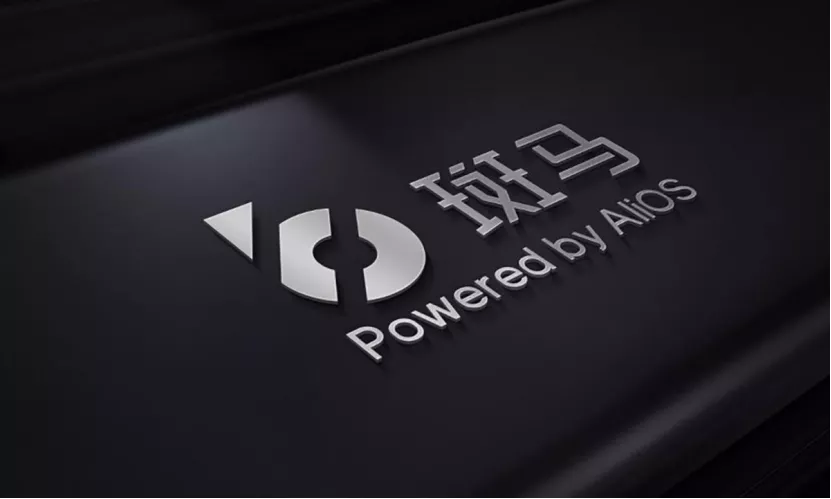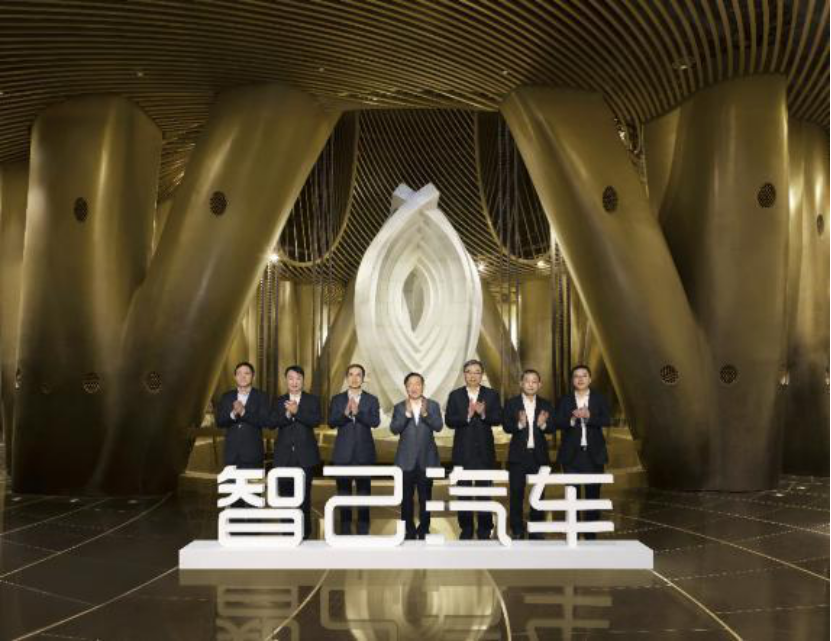The high-end new energy vehicle brand jointly created by SAIC and Alibaba made its debut.
On January 13, 2021, IM Auto, jointly created by SAIC Group, Zhangjiang Hi-Tech and Alibaba, officially announced its high-end intelligent pure electric vehicle brand – IM IM in Shanghai, CES in Las Vegas and London, UK.
In addition to the brand name, this press conference also revealed two new production models of IM – intelligent pure electric sedan and intelligent pure electric SUV.
It is reported that the production model of the intelligent pure electric sedan will be available for global reservation during the 2021 Shanghai Auto Show in April, and it will be launched at the end of 2021 and delivered to car owners in 2022. The intelligent pure electric SUV will be officially launched in 2022.
As we all know, this is not the first partnership between SAIC and Alibaba. As early as 2016, the two sides jointly created the first Internet car. In 2019, the two sides reorganized their joint venture company Banma Network and lifted the strong binding period. However, after a year, the two sides worked together again.
Perhaps some people are confused about this move by SAIC and Alibaba, but from a strategic perspective, facing the future intelligent connected car era, SAIC needs strong external technological support, while Alibaba needs to find strong support for its automotive business. As old partners, facing their own needs and the trend of the times, they naturally come together. If IM Auto succeeds, it will be a win-win situation for both parties just like the first Internet car.
IM Auto is here
It is worth noting that just before the release of IM Auto, NIO just released its first high-end new energy car ET7 in Chengdu, competing with Tesla Model Y. So, can IM Auto compete with NIO ET7?
First of all, IM Auto adopts a new generation of domain fusion central computing digital architecture, which integrates four domain controllers, including IPD intelligent driving center, ICC intelligent computing center, ICM intelligent cockpit center, and IMATE intelligent partner.
The new generation of digital architecture breaks down the barriers between software and hardware, allowing IM Auto to better integrate and develop. For example, in the whole vehicle OTA, IM Auto’s OTA upgrade goes directly to the “atomic layer”, and the underlying controllers can be combined with vehicle perception and analysis capabilities to optimize control strategies and software based on real-time scenarios and instantly push updates, providing users with a complete and real-time deep intelligent experience.# Intelligent Automobile Service-Oriented Architecture (SOA)
The SOA based on service-oriented software architecture developed by Intelligent Automobile can split different car functions into modular services and link them together through well-defined interfaces and protocols. This allows for easy combination and call of various services at the service layer, eliminating hardware barriers and creating a unique user experience.
As for the car operating system, Intelligent Automobile adopts the innovative IMOS operating system for unlimited interaction. In addition, it uses multi-core heterogeneous central intelligent scheduling at the bottom, and can fully compatible with the vehicle-side operating system.
According to reports, the IMOS system has three features, including mobility: cross-screen display; nourishment: based on weather, time, road conditions, and even user moods, providing recommended options in different scenarios; purity: providing a pure driving experience, only displaying the necessary information for users while driving.
It is worth mentioning that Intelligent Automobile’s integration of 39 ‘Incell large screen displays in the car can be intelligently split and lifted according to usage scenarios, and a 12.8″ 2K AMOLED curved smart control center screen that can control all travel scenarios in one screen.
In terms of autonomous driving, Intelligent Automobile also has the most advantageous solution in the industry.
Reportedly, its autonomous driving solution is mainly based on visual perception and consists of a fusion perception solution that includes NVIDIA Xavier (30~60 TOPS), 15 high-definition cameras, 5 mm-wave radar, and 12 ultrasonic radars, achieving full scene, long-distance perception of all road conditions.
Moreover, this solution is compatible with laser radar software and hardware redundant architectures and supports the upgrade of NVIDIA Orin X (500~1000+TOPS) and 3 laser radars. When laser radar enters the period of commercial mass production, Intelligent Automobile can immediately upgrade the laser radar system on mass production models.
Based on this autonomous driving solution, Intelligent Automobile can achieve memory parking and summoning, automatic valet parking, recognition of traffic lights and automatic passing through intersections, prevention of cut-in and automatic avoidance of obstacles, automatic lane change according to navigation paths, overtaking, entering and exiting ramps, as well as Super Pilot, Traffic Jam Pilot, and rear-end collision warning. By the end of 2021, when allowed by national regulations and open high-precision maps, it has the ability of point-to-point zero take-over autonomous driving.After discussing about intelligence and automation, let’s talk about the most concerning issue for users – the issue of driving range. During the product release conference, it was announced that IM Motors will equip all models with a 93kWh battery, while the high-end models will have a 115kWh battery, using the world’s first silicon-doped lithium technology, achieving an energy density of 300Wh/kg per unit, and the bandwidth of the new architecture can support a driving range of nearly 1000km.
Regarding charging, IM Motors is also the first to mass-produce 11KW high-power wireless charging. It can charge 10.5 kWh in one hour, which is equivalent to a driving range of 70-80km under NEDC conditions, ensuring daily commuting needs. At the same time, with the cm-level high-precision fixed-point automatic parking function, the vehicle can automatically park in the parking space to replenish energy. Users no longer need to perform any charging operations, achieving a truly “seamless recharge” experience.
In terms of power, IM Motors uses high-torque dual electric shafts, intelligent dynamic four-wheel drive technology, and the rear axle as the main drive, with a power of 400kW, torque of 700 N · m, and a acceleration up to 100km/h in just 3.9 seconds, meeting the performance requirements of sports cars.
As for the final price, it was not announced during the conference. However, industry insiders speculated that the final price will be around 300,000 yuan, while that of the NIO ET7 will be over 440,000 yuan. Based on the current product information, this undoubtedly represents the strongest strength of SAIC-Alibaba, and can be described as a “last-ditch battle” for SAIC’s transformation.
Multiple industry insiders have previously stated that traditional automakers have limited time to transform and upgrade to face the impact of new car manufacturers and Tesla, only having a two to three-year transition window. If they fail to complete the transformation during this period, they may be phased out of the market.
Therefore, in the past year, several traditional automakers have announced that they will enter the high-end intelligent new energy vehicle field, including GAC Aion and Dongfeng Dorcen, as well as Changan and Great Wall planning to launch new generations of high-end intelligent brands.
SAIC, as the automaker with the largest production and sales scale in China, still ranks first in domestic automobile sales with an annual sales volume of 5.6 million vehicles in 2020, but it is also difficult to resist the double decline trend of profit and sales volume.
According to the 2020 annual performance forecast released by SAIC, the net profit attributable to shareholders of the listed company is expected to be about 20 billion yuan, a year-on-year decrease of 5.6 billion yuan, and a decline of about 21.89%. At the same time, SAIC’s vehicle sales also fell from 62.38 million in 2019 to 5.6 million in 2020, a decrease of 10.22%. The demand for transformation and upgrading is urgent.In August 2019, Alibaba SAIC announced the restructuring of Banma Network, acquiring absolute controlling rights and injecting YUNOS operating system’s comprehensive intellectual property and business into Banma. After the announcement, Banma entered a new era.

In May 2020, Banma announced the completion of the restructuring and appointed Zhang Chunhui as co-CEO. During the meeting, Banma Network’s Chairman Zhang Jianfeng stated that “Banma aims to fully integrate and leverage the resources and capabilities of its shareholders. Alibaba DAMO Academy, Pingtouge, and Tmall Genie will fully support Banma in enhancing its product technology and capabilities, helping Banma develop future-oriented intelligent automotive operating systems.”
At the time, there were many speculations within the industry regarding Alibaba and SAIC’s split, with most attributing the divergence in development between the two parties. In terms of positioning, Banma played a supplier’s role previously, but after its acquisition by Alibaba, it can develop better independently.
Meanwhile, according to a LatePost report, last year, Alibaba issued a clear target to Banma Network to have AliOS installed in 10 million cars in 3 years. From July 2016 to September 2019, the installation volume of AliOS is more than 900,000 cars. To achieve the new target, Banma will need to increase the installation volume tenfold in the next three years.
Regardless of whether it is SAIC or Alibaba, in the face of the changing times, both parties have their own urgent needs, and cooperation comes along with it.
On November 26, 2020, the high-end pure electric vehicle brand, “Zhi Ji” jointly ventured by SAIC, Alibaba, and Pudong New Area, signed, and the first round of financing was achieved with RMB 10 billion. According to a report by Shanghai Auto News citing SAIC insiders, the shares of SAIC accounted for 54%, Pudong Investment accounted for 18%, Alibaba accounted for 18%, and others accounted for 10% of the project.

On December 25th, Zhi Ji officially registered in Pudong New Area. Meanwhile, the board of directors was established on the same day, with SAIC President Wang Xiaoqiu serving as the chairman, SAIC Vice President and Chief Engineer Zu Sijie, SAIC Vice President and General Manager of Passenger Cars Yang Xiaodong, Zhangjiang Gaoke Chairman Liu Ying, and Alibaba DAMO Academy Dean Zhang Jianfeng serving as directors.
Regarding the SAIC-Alibaba partnership once again, industry insiders state that partnering and investing in each other is the need of the times and can truly achieve mutual benefit. From the perspective of automakers, it is difficult to establish a high-end, intelligent new energy vehicle brand alone, so collaboration offers a way forward. For these tech giants, if the joint venture model becomes successful, it would be an excellent case study and attract more automakers to follow suit.### Summary
Traditional car companies are now competing for speed. With more and more players entering the game, competition will undoubtedly become more intense in the new energy vehicle market after 2021. SAIC and Alibaba had previously created the first myth of internet-connected cars in the industry. It is worth looking forward to whether they can create a second myth with their cooperation this time.
This article is a translation by ChatGPT of a Chinese report from 42HOW. If you have any questions about it, please email bd@42how.com.
